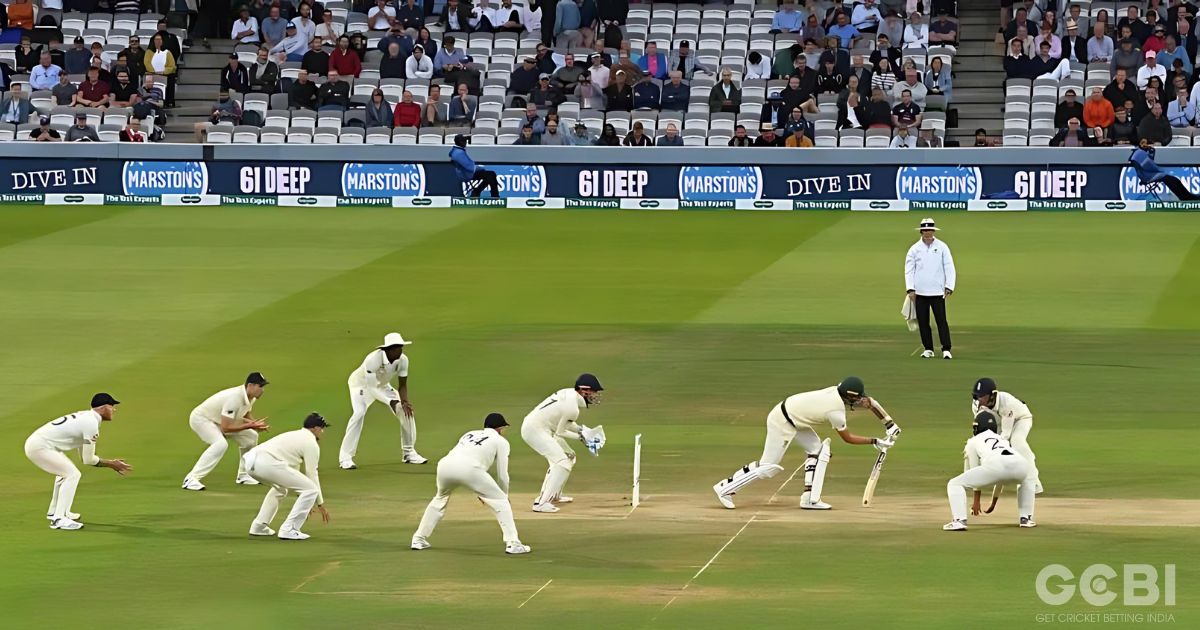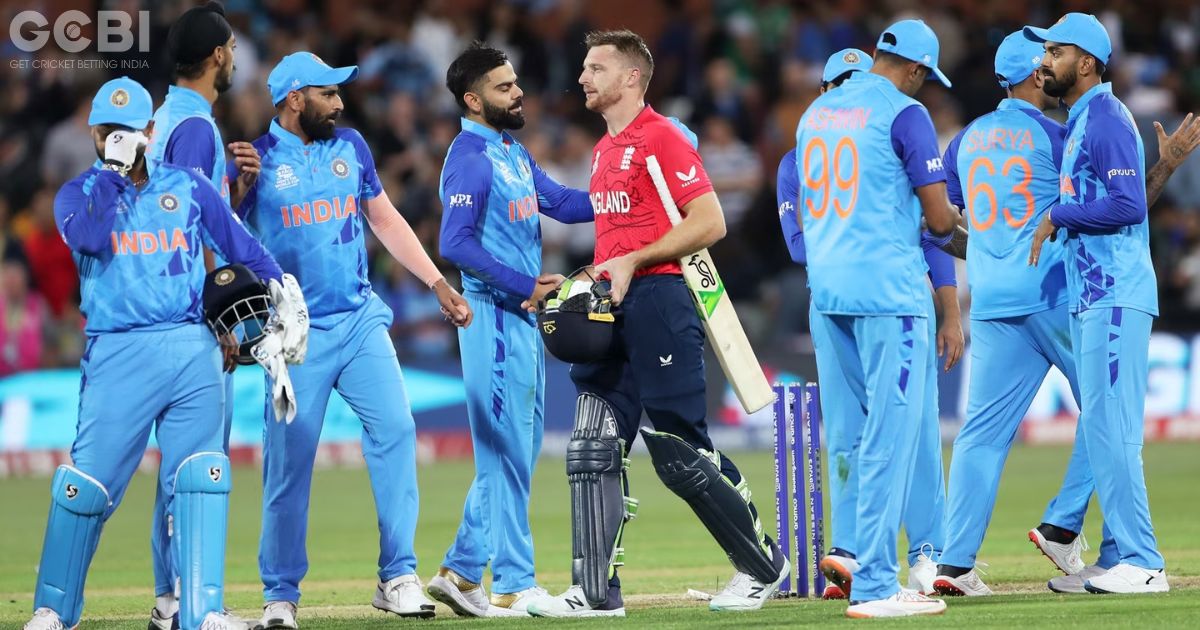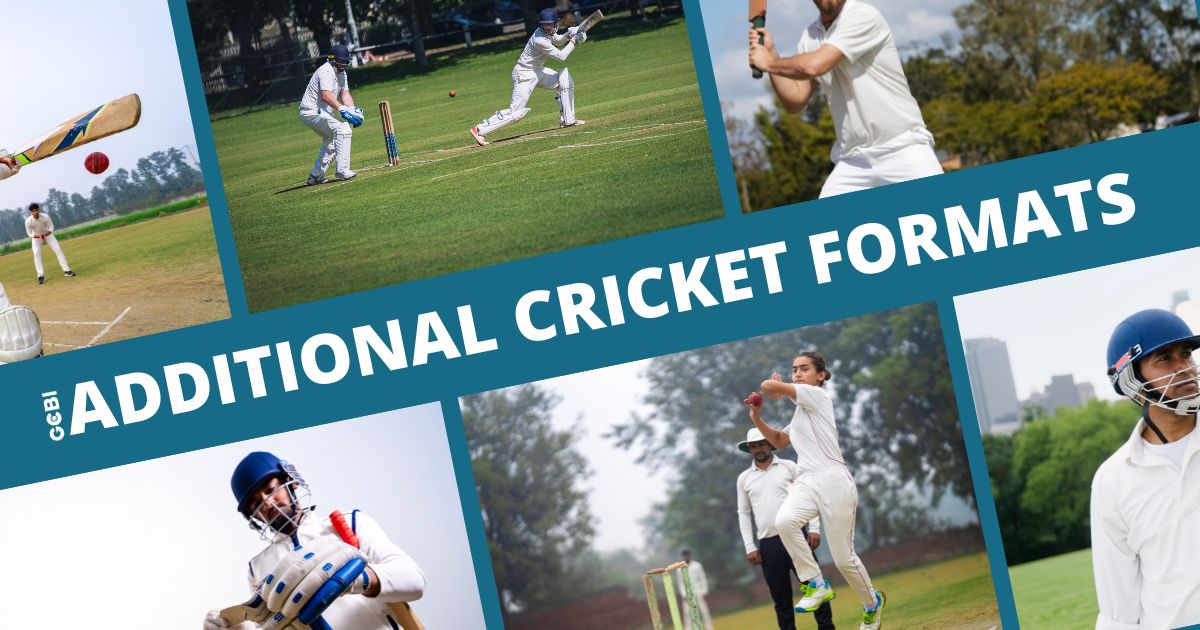Welcome to the ultimate cricket formats guide. Here, we try to simplify the multiverse world of cricket via its game formats.
Cricket is known as a gentleman’s sport and consists of numerous formats, and they are not quite the same. In this guide, we will dive into the major cricket formats, unpack what makes them unique, and how they influence the game.
This article is for those who already know a lot about cricket, as well as for those who just started watching the game.
The Big Three: Test Matches, ODIs, and T20s
The versatility of cricket is its beauty. Different formats make time for a play style, a tempo, and intensity to tailor to. From the five-day long hauls of Test matches for the eager to the turbocharged sprint of a T20 match for the casual, there is something for everyone in cricket.
This session will work as your guide, making sure you have the basics of different cricket formats down, and that you are given the chance to become a true expert in it.
Test cricket: The Ultimate Test of Skill and Stamina
Test cricket, which is the oldest possible game format, is a long and tough battle that is good at showing both physical and mental endurance of a team.
With this kind of format, every team takes two innings, at the end of which the game is over. The final outcome is either the occurrence of a record large lead or all the ten wickets (dismissals) are fallen for both sides.

Beyond the fact, red balls and remembering old white clothing contribute to the test match’s strong age-old feel. These matches which are up to 5 days long, are real epitomes of a cricketing talent.
The five day long game places the most extreme demands on the players’ batting skills, bowling accuracy and mental strength. The sight of a batsman making a perfect Test century or a bowler bowling a masterpiece as wickets keep falling makes your cricket playing dreams come true.
Key characteristics of Test Cricket
✔️ Two innings per team
✔️ Up to five days in duration
✔️ Red ball used
✔️ White clothing for players
One day international (ODI): A Faster Paced Match
ODIs are short play and fast movements that bring the game from a dull boring moment to a very engaging second of action. Within the boundary limits, an ODI is split into two teams, each team facing no more than 50 overs in total.
This form of cricket is nothing but the ticking tock towards the deadline. The quick-moving pace of play is ensured by the fact that the quick fielding restrictions are allowed to be lifted during certain overs and a white ball used. These conditions are all set up to make these matches a treat for six-hitters.

ODIs have become the stage for fireworks of batting skills and artistry of the captains.
Seeing a team overtake an inability barrier in the last overs or a batsman delivering a match-winning yorker are the moments that leave ODI lovers at the edge of their seats.
Key characteristics of ODIs
✔️ Two innings per team
✔️ One-day duration
✔️ White ball used
✔️ Limited fielding restrictions in certain overs
Twenty20 (T20) Cricket: Cricket’s Explosive Short Format
The shortest and most intense form of cricket is T20. Visualize a miniature form of ODI, with each team batting for 20 overs.
The effect? A turbulent combination of the outstanding striking, stunning fielding and stunning endings.
This cricket version has made the difference for the sport, as it has attracted the fans who love its fast and exciting character.

Consequently, T20s have become a modern era for batting and bowling standards.
Witnessing a batsman score three consecutive sixes or a bowler take a fielding catch with a foxy delivery is what bowling is all about.
Key characteristics of T20s
✔️ Two innings per team
✔️ Approximately three-hour duration
✔️ White ball used
✔️ Extensive fielding restrictions throughout the innings
Comparison of Cricket Formats
Now that you’re familiar with the “Big Three,” let’s delve deeper and compare them:
| Feature | Test Cricket | ODI | T20 |
| Duration | Up to 5 days | One Day | ~ 3 hours |
| Innings per Team | Two | Two | Two |
| Overs per Innings | Variable | 50 | 20 |
| Ball Color | Red | White | White |
| Player Clothing | White | Colored | Colored |
| Pace of Play | Slower | Moderate | Fast |
| Emphasis on | Skill & Stamina | Balance | Power Hitting |
Duration
Test matches are the only ones that last for five days, as opposed to three days and two days for ODI and T20 respectively.
Both ODIs and T20 are single day plays but T20 is the shortest match that may last about three hours.
Playing Conditions
In longer Test matches, differentiated balls accompanied by a decay effect through the time, create an element of strategy. ODIs and T20s use white balls mainly for batting onslaught.
Therefore, batting gets more prominence in them. These restrictions are different too, with the shorter format of T20 enabling bowlers to gain power plays (where only some fielding positions are given).
Scoring Systems
Fast formats provide every player with the possibility to improve his score due to hits and intrawickets course running.
Boundaries (sixes and fours) are valuable opportunities where in all formats but T20s the latter shall give greater accents on it due to tighter timeframe.
Beyond the Basics: Exploring Additional Cricket Formats

The big three formats are the ones that right now completely transform the scenery of cricket but also there are many other later versions.
- First-Class Cricket: A broad grouping of Test Matches including matches played in the domestic cricket league with the same rules.
- List A Cricket: The one-day matches with a limited number of overs (typically 50), these matches are sometimes considered as stepping stones for the ODI. It is popular to mention tournaments like the Royal London One-Day Cup (England) and Vijay Hazare Trophy (India).
- T10 Cricket: The shortest format of the game where each team comes to bat only for 10 overs. These timely and bombastic shows are becoming more and more famous globally.
- The Hundred: This is a newly-crafted format which breaks away from traditional patterns by applying its own set of rules. The game is played with 100-ball innings, the bowlers bowling in five to ten-ball spells. Such an innovative approach is aimed at attracting new followers by its quick pace and important details of the game.
- Club Cricket: Club cricket is the soul of cricket, where enthusiasts sharpen their talents and potential of the brilliant cricketers. The matches last for less time than other leagues but manage to build a close-knit community and maintain a pure ferocity for the game.
- Indoor Cricket: Indoor cricket is a variation that is fast paced, where a softer ball is used on a smaller, synthetic area. Awareness is given to speed, improvisation, and innovation which makes it an enjoyable recreation for the team and the audience.
How Cricket Formats Affect Match Strategies
The formats appreciably affect how teams approach a fit. Let’s revisit the Big Three to recognize the strategic nuances:
Test Matches
Patience and cautious action planning are critical. Batters must form the basis of their innings, and bowlers need to be steady and discover the opposition’s weak spots.
Captains have to be very careful about the bowling changes and field placements with respect to the stretching period.
ODIs
Balance is the key-word. Teams need to have a robust batting line up which enables them to attain fast and still have an effective bowling attack which prevents the opposition from making runs.
Captains now require a higher level of adaptability, being able to use fielding restrictions accurately and make on-the-spot decisions during run chases.
T20s
Aggression is in the middle of the image. Batsmen start attacking right from the early balls, and the bowlers need to be very smart and restrict the flow of runs.
Captains must decide whom to bowl at and where to position the fielders in no time, having to exchange for that reason to the variable scenario.
The Final Thought
In conclusion, cricket has several formats which give fans different ways to watch. Test cricket lasts for days but lets viewers see the complete skill set and drama. T20s are short, packed with big hits and excitement.
Each format needs different plans from players and teams. Learning the formats helps to better understand the on-field action. Once you know the rules and key areas of each format, following games gets easier.
So the next time cricket is on TV, consider the format being played. Understand how Test matches differ from ODIs and T20s in terms of tactics used, player roles, and worldwide popularity. Exploring formats in-depth enhances your connection to this amazing game.
Interested in expanding your knowledge about cricket betting? Look no further than GCBI for assistance! Access trustworthy evaluations and expert guidance to ensure informed decisions.
